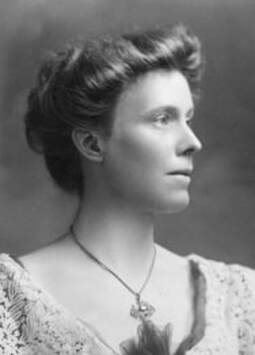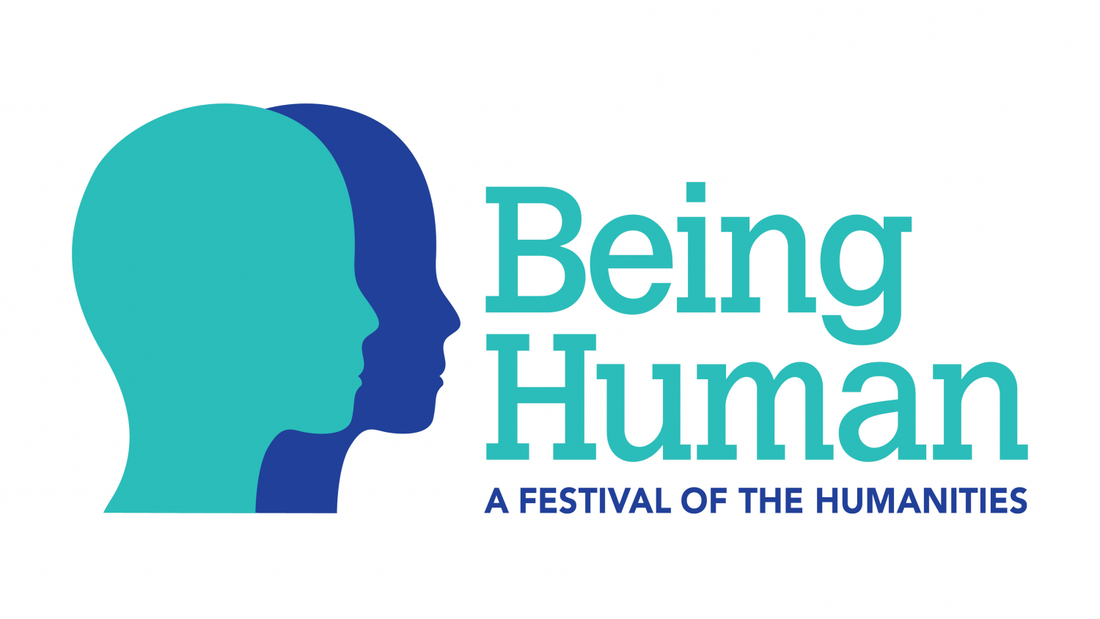NORA GRIFFITH (1870-1937)

Nora Christina Cobban Griffith (née Macdonald) was born just outside Aberdeen in the village of New Machar on the 7th of December in 1870, to Surgeon Major James Macdonald Margaret Helen Lesley Collie. A trip to Egypt in 1906 sparked Nora's fascination in Ancient Egypt and relics as while she was there, she met Norman de Garis Davies, an English Egyptologist, who was at the time of their meeting the head of the Egypt Exploration Fund.
Upon her return to Scotland Nora become a conservator in the archaeological museum of King’s College Aberdeen. Nora went on to take courses on Egyptology at Oxford and was briefly a pupil of Francis Griffith and they married in 1909 when Nora was 39. By this time her husband already had a successful career in the Egyptology field. Nora joined her husband in Egypt, Nubia and the Sudan, where she studied Egyptian reliefs as well as taking photos, copying the hieroglyphs, and taking notes on wall inscriptions and art. Nora flourished in her new life with her articles published in the Journal of Egyptian Archaeology as well as Sudan Notes and Records, the first of which was published in 1923. Francis always paid tribute to Nora in the preface of his works and included the work that she had done for him.
Francis died in 1935 and Nora made it her life’s mission to continue what he had started. In one of his works published after his death, “Demotic Graffiti in the Dodeca Schoenus” 70 plates (coloured pages within the book) were drawn meticulously by her. Nora went on to perfectly organise and finance further expeditions to Nubia and the Sudan and is credited for collecting all in the Griffiths personal Egyptological library which was later transferred to the Ashmolean Museum in Oxford in 1939. This provided the start of the Griffith Institute library.
Nora died at the age of 64 on October 21st, 1937, after an operation to remove her appendix. Nora left most of her estate which was combined with that of her husband to the University of Oxford. Their legacy consists of objects, books, documents, and money that amounted to more than considerable amount. This money is intended to fulfil his desire to create an institute dedicated to Egyptology. The exact amount left without accounting for inflation was £52029, “to furnish and endow a home for Egyptological study”. The Griffith institute opened on January 21st, 1939, and is now a world-renowned centre for Egyptology research and study. Nora is at the core of the success and prestige of this foundation. Nora not only had an effect on the world of Egyptology but on almost everyone that she met. A friend of the couple Sir Alan Gardiner said that he admired Nora’s deep intelligence and artistic talent, he also credits Nora for bringing her husband out of his shell. “He was withdrawn, reserved and with Nora, he "evolved" to great effect, no longer fearing to appear in society, going to dinners, practicing the sport” Nora had an obituary in the times on October 25th, 1937. A small quote is: “but if her academic activity was the admiration of her wide circle of friends at home and abroad, it was her hospitality, goodness, her wide sympathies, sense of humour and courage that gained their love.”
There is a plaque is placed here at Aberdeen University as Nora worked as a conservator there in the Archaeological Museum between 1901 and 1907, when the collection was transferred to the Anthropological Museum of Marischall College (the latter curated by Robert Reid, the Professor of Anatomy). There are various manuscript catalogues that appear to have been written by her and which look to form the (uncredited) basis of Reid’s 1912 published catalogue. There is also a wonderful glass slide of her holding an unwrapped mummy in the King’s College Archaeological Museum. This was subsequently published as a cropped image showing only the mummy.
Entry written by Amy Thomson.
Upon her return to Scotland Nora become a conservator in the archaeological museum of King’s College Aberdeen. Nora went on to take courses on Egyptology at Oxford and was briefly a pupil of Francis Griffith and they married in 1909 when Nora was 39. By this time her husband already had a successful career in the Egyptology field. Nora joined her husband in Egypt, Nubia and the Sudan, where she studied Egyptian reliefs as well as taking photos, copying the hieroglyphs, and taking notes on wall inscriptions and art. Nora flourished in her new life with her articles published in the Journal of Egyptian Archaeology as well as Sudan Notes and Records, the first of which was published in 1923. Francis always paid tribute to Nora in the preface of his works and included the work that she had done for him.
Francis died in 1935 and Nora made it her life’s mission to continue what he had started. In one of his works published after his death, “Demotic Graffiti in the Dodeca Schoenus” 70 plates (coloured pages within the book) were drawn meticulously by her. Nora went on to perfectly organise and finance further expeditions to Nubia and the Sudan and is credited for collecting all in the Griffiths personal Egyptological library which was later transferred to the Ashmolean Museum in Oxford in 1939. This provided the start of the Griffith Institute library.
Nora died at the age of 64 on October 21st, 1937, after an operation to remove her appendix. Nora left most of her estate which was combined with that of her husband to the University of Oxford. Their legacy consists of objects, books, documents, and money that amounted to more than considerable amount. This money is intended to fulfil his desire to create an institute dedicated to Egyptology. The exact amount left without accounting for inflation was £52029, “to furnish and endow a home for Egyptological study”. The Griffith institute opened on January 21st, 1939, and is now a world-renowned centre for Egyptology research and study. Nora is at the core of the success and prestige of this foundation. Nora not only had an effect on the world of Egyptology but on almost everyone that she met. A friend of the couple Sir Alan Gardiner said that he admired Nora’s deep intelligence and artistic talent, he also credits Nora for bringing her husband out of his shell. “He was withdrawn, reserved and with Nora, he "evolved" to great effect, no longer fearing to appear in society, going to dinners, practicing the sport” Nora had an obituary in the times on October 25th, 1937. A small quote is: “but if her academic activity was the admiration of her wide circle of friends at home and abroad, it was her hospitality, goodness, her wide sympathies, sense of humour and courage that gained their love.”
There is a plaque is placed here at Aberdeen University as Nora worked as a conservator there in the Archaeological Museum between 1901 and 1907, when the collection was transferred to the Anthropological Museum of Marischall College (the latter curated by Robert Reid, the Professor of Anatomy). There are various manuscript catalogues that appear to have been written by her and which look to form the (uncredited) basis of Reid’s 1912 published catalogue. There is also a wonderful glass slide of her holding an unwrapped mummy in the King’s College Archaeological Museum. This was subsequently published as a cropped image showing only the mummy.
Entry written by Amy Thomson.



